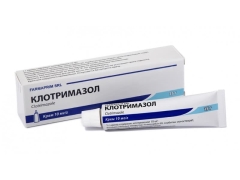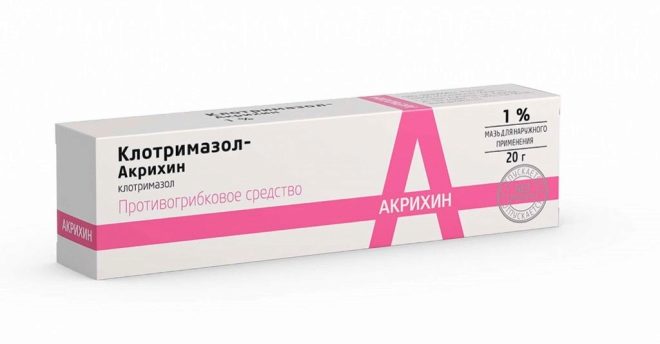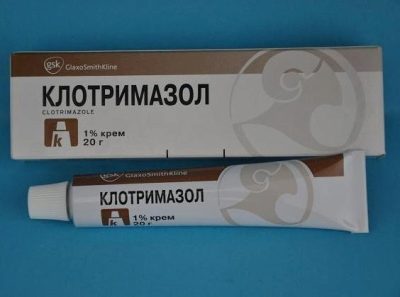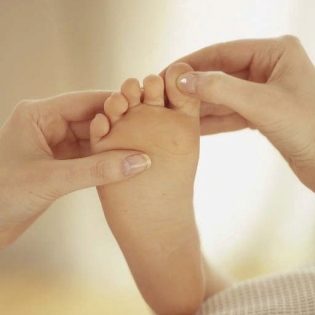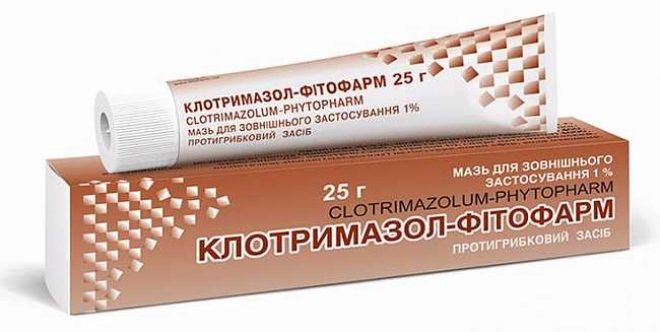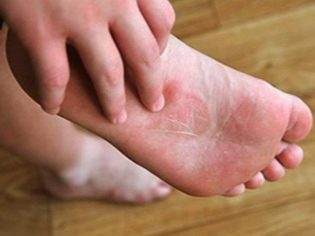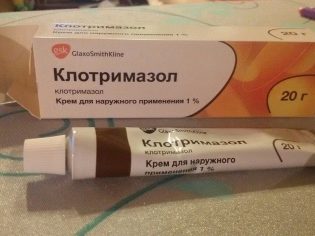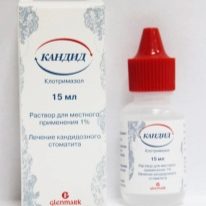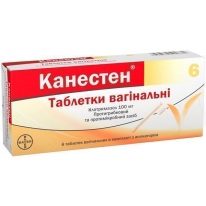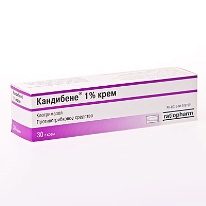Ointment "Clotrimazole" for children: instructions for use
Skin diseases can be caused not only by bacteria, but also by fungi. And with such an infection, the most popular are local means capable of destroying fungi. One of them is Clotrimazole. It comes in many forms, but ointment is most often used for skin diseases. Is it permitted in childhood, for which diseases is it used and how does it work?
Release form and composition
Clotrimazole in the form of an ointment is a white or white-yellow thick homogeneous mass with a peculiar odor. On sale there are packs with different amounts of ointment - 15 g, 20 g, 30 g or others. They all contain the active compound, called, as the drug, clotrimazole. The concentration of this substance in 1 gram of ointment is 10 mg (1%).
Auxiliary ingredients differ from different manufacturers. Among them you can see propylene glycol, methylcellulose, propyl parahydroxybenzoate, cetostearyl alcohol, polysorbate 80, monoglycerides, glycerol and other compounds.
In addition to the ointment, Clotrimazole is represented by several other dosage forms:
- Cream, solution or gel. Such preparations contain 1% of the active substance and are also used for local skin treatment.
- Vaginal tablets or suppositories that are predominantly prescribed for adults with genital thrush.
Operating principle
The main component of the ointment has antifungal effects. It disrupts the process of synthesis of cell membranes, as a result of which the cells of fungi become more permeable and are destroyed.
If the concentration of clotrimazole is low, then the medicine will have a fungistatic effect, that is, it will only slow down the development and growth of pathogenic fungi. High concentration of active compound destroys fungi (acts fungicide) due to the effect on the enzymes inside the pathogen cells.
The drug is active against yeast-like fungi (including candida), mold fungi and dermatophytes.
In addition, he is able to destroy pathogens of skin diseases such as erythrasma and versicolor versicolor. The medicine also acts on some bacteria, for example, on bacteroids, staphylococci and streptococci.
After application to the skin, the drug acts mainly locally. In this case, the highest concentration of the active compound is noted in the epidermis, and the drug penetrates into the deeper layers of the skin worse.
Indications
Clotrimazole ointment is used for:
- Fungal diseases of the skin;
- Foot fungus lesions;
- Fungal infections of skin folds;
- Hand fungus;
- Surface forms of candidiasis;
- Pityriasis lichen;
- Mycoses, which are complicated by purulent bacterial infection.
At what age is it allowed to take?
The use of Clotrimazole ointment in children is possible at any age, but before starting treatment, you should consult your doctor to make sure that you have a fungal infection. It is not recommended to smear the skin of a child at the age of 1-5 years or at another age without examination by a pediatrician or a dermatologist.
Contraindications
The drug is not prescribed to children who have previously identified an allergic reaction to clotrimazole or other ingredients of the ointment. There are no other contraindications for children in the annotation to the drug.
If a child has liver pathology, then the work of this body during treatment with Clotrimazole should be regularly checked. In addition, you can not apply the medication on the skin around the eyes, and if after three days of application no effect is observed, you should consult a doctor to confirm the diagnosis.
Side effects
Since clotrimazole is very poorly absorbed when externally administered, the use of the ointment does not provoke systemic side effects. However, the drug can cause local negative reactions and allergies.
Young patients sometimes complain that an ointment-treated area tingles, bakes, or itches.
In some children, peeling, redness, irritation or swelling of the skin occurs after applying the medication.
In rare cases, treatment leads to paresthesias and rashes. To avoid such negative effects of therapy, the first application of the ointment should be on a small area of skin. After waiting a few hours and making sure that there are no redness, rashes and other symptoms of allergy, then the medication can be applied according to the regimen prescribed by the doctor.
Instructions for use and dosage
The drug is applied to the skin twice or three times a day with a thin layer. Before processing the skin should be cleaned - wash with soap and wipe dry. Apply the ointment gently rubbed into the affected area. Oiled skin is left open until the product is completely absorbed.
The duration of use of the drug in each case must be determined by the physician, taking into account the severity of the infection, localization of the process and skin reaction to treatment. For example, with foot fungus, ointment is used for 2-3 weeks, and for ringworms - at least 4 weeks. As a rule, after the complete disappearance of symptoms, it is recommended to lubricate the skin for another week or longer.
Overdose
In the annotation to the ointment manufacturer indicates that the use of the drug in high doses does not lead to any negative reactions, because the drug acts mainly in the place of application to the skin.
Interaction with other drugs
If clotrimazole is used at the same time as drugs that contain nystatin, amphotericin B or natamycin, this will reduce the healing effect of the ointment. Treatment of skin with clotrimazole does not affect the treatment by other means, because it is practically not absorbed and does not enter the bloodstream.
Terms of sale and storage
Clotrimazole in the form of an ointment can be easily purchased at almost any pharmacy, since it is a non-prescription drug. The average price of a tube containing 20 g of ointment is 35-40 rubles. You need to store the medication at home at a temperature of 5 to 20 degrees Celsius in a dry place where the medicine will not be available for children. The shelf life of this form of Clotrimazole is 2 years.
Reviews
About treatment with clotrimazole ointment respond mostly well. Moms confirm that this tool effectively helps with diaper rash caused by candida, for herpes and other fungal infections of the skin. This form is called easy to use, inexpensive and effective, and adverse reactions to the ointment are very rare.
Analogs
Instead of clotrimazole ointment, you can use another drug with the same active ingredient:
- Amyclone. Such a domestic drug is 1% cream.
- Candide. This Indian-made medicine is represented by a wide variety of dosage forms. Apply powder, solution and cream to skin processing. Adults with candidiasis are prescribed vaginal tablets and vaginal gel. The babies are most often given a 1% solution for local use, which is treated with candidal stomatitis.
- Candibene. This German drug is available in solution (it is used for treating the skin) and as vaginal tablets.
- Kanesten. This medicine is 1% spray and is manufactured in Germany.
- Candizol. This medicine is available in India in the form of vaginal tablets and 1% cream.
- Canison This Indian medicine is produced in the form of an ointment, solution and vaginal tablets.
In addition, instead of drugs clotrimazole the doctor may prescribe other antifungal agents, for example, Fluconazole, Mikozon, Nystatin or Pimafucin.
If necessary, these drugs are supplemented with anti-inflammatory drugs, vitamins and other therapies to act on the infection in a complex way and as a result completely get rid of it.
You will learn more about Clotrimazole from the following video.
